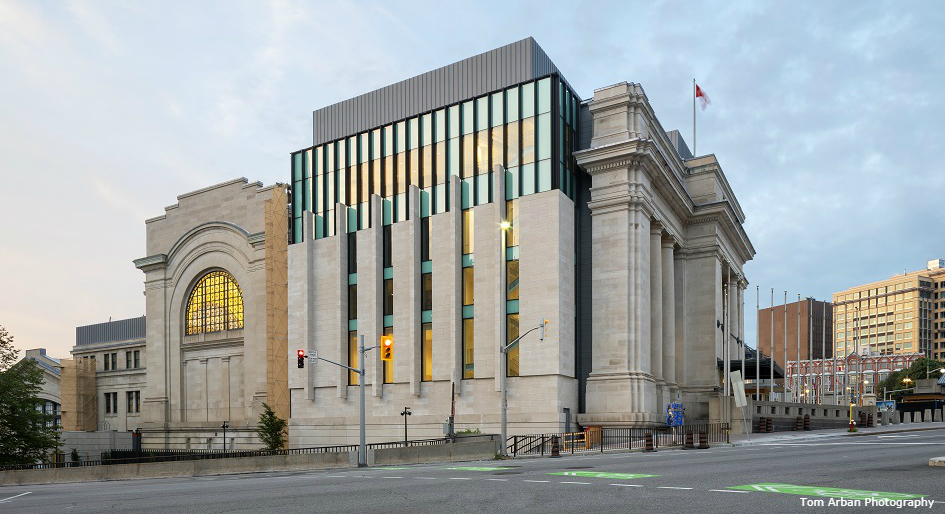Ottawa’s former Beaux-Arts central train station, built in 1912, has officially reopened as the new Senate of Canada Building following its restoration.
Designed by Diamond Schmitt Architects and KWC Architects, the transformed building, which has largely been off-limits to the public for 50 years, now features committee and meeting rooms, offices and public space.
“This project provided a remarkable opportunity to investigate and engage in a range of design innovations to introduce a new program in a heritage building, to represent and raise the profile of the Senate’s role in Parliament, and to convey Canadian identity through contemporary interpretations of national symbols and iconography,” said Martin Davidson, principal at Diamond Schmitt Architects, in a press release.
Diamond Schmitt worked with the Dominion Sculptor of Canada and employed digital technologies, influenced by both traditional craft and contemporary fabrication techniques, to inform material selection and the design of a variety of details. The leaf pattern of 10 native maple trees, which appear in the wooden doors to committee rooms and the Senate Chamber, are hand-carved, scanned and CNC-carved. Perforated bronze panels frame committee rooms with large-scale images of landscapes rendered as half-tone images. The Senate Chamber, located in the former station Concourse, features the most detailed design elements.
The facility, which became home to the Government Conference Centre in 1973, required a complete overhaul of major building systems. It also had to be made compliant with seismic codes, accessibility and life safety upgrades. The exterior’s east façade, which used to be blank, is now reimagined as a modern interpretation of the building’s stone-columned, Beaux-Arts façade.
The Senate of Canada will occupy the building for 10 years during the restoration of Centre Block on Parliament Hill. After that point, the building is designed to accommodate conference and office use. The transformation of the historic building assures its use in the future.




